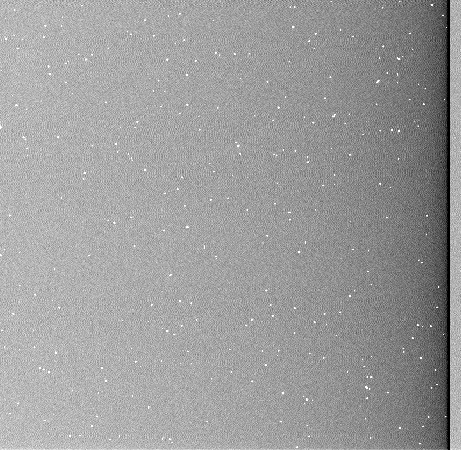 C is considered.
C is considered.
The amount of dark current depends on the CCD temperature and the
MPP mode used. Here, only the standard operating temperature of
-100^ C is considered.
C is considered.
In the default MPP+ mode, dark current is found to be approx.
2e /pixel/hour. Actually, only about half of this is real dark current.
The other half is caused by the pressure sensor that emits light quite
strongly. A baffle has been put in front of the sensor, reducing the light
level to about the dark current level, and distributing the light evenly
over the CCD.
/pixel/hour. Actually, only about half of this is real dark current.
The other half is caused by the pressure sensor that emits light quite
strongly. A baffle has been put in front of the sensor, reducing the light
level to about the dark current level, and distributing the light evenly
over the CCD.
In MPP-- mode, the dark current is approx. 9e /pixel/hour. As MPP-- mode
is expected to provide a slightly better MTF, the increased dark current
may be acceptable for many applications.
/pixel/hour. As MPP-- mode
is expected to provide a slightly better MTF, the increased dark current
may be acceptable for many applications.
If several long exposure dark images are median filtered and bias subtracted, a completely flat image results. No structure or hot pixels have been found.
A 1800sec, MPP+, Amplifier B, -100 ^ C dark exposure is shown in figure
12.
Except for re-binning, no processing have been made. A horizontal
gradient is seen next to the overscan region. The structure is removed
by bias subtraction.
C dark exposure is shown in figure
12.
Except for re-binning, no processing have been made. A horizontal
gradient is seen next to the overscan region. The structure is removed
by bias subtraction.

Figure:
A 1800sec, MPP+, Amplifier B, -100 ^ C dark exposure.
Except for re-binning, no processing have been made.
Note the absense of any hot spots or columns.
Only cosmic hits are visible, which
appear stellar-like due to the poor MTF.
The horizontal structure will be corrected by bias subtraction.
C dark exposure.
Except for re-binning, no processing have been made.
Note the absense of any hot spots or columns.
Only cosmic hits are visible, which
appear stellar-like due to the poor MTF.
The horizontal structure will be corrected by bias subtraction.